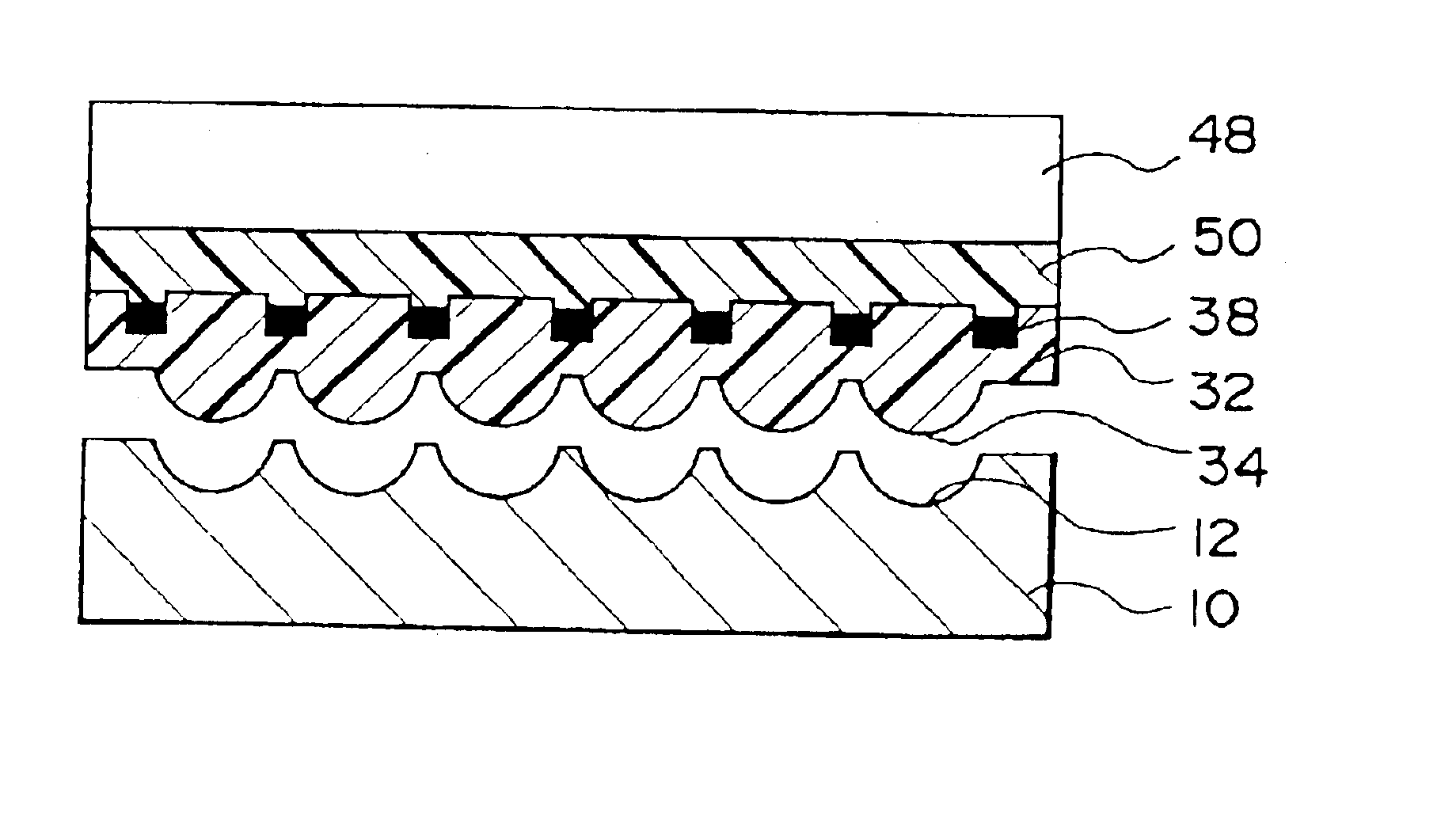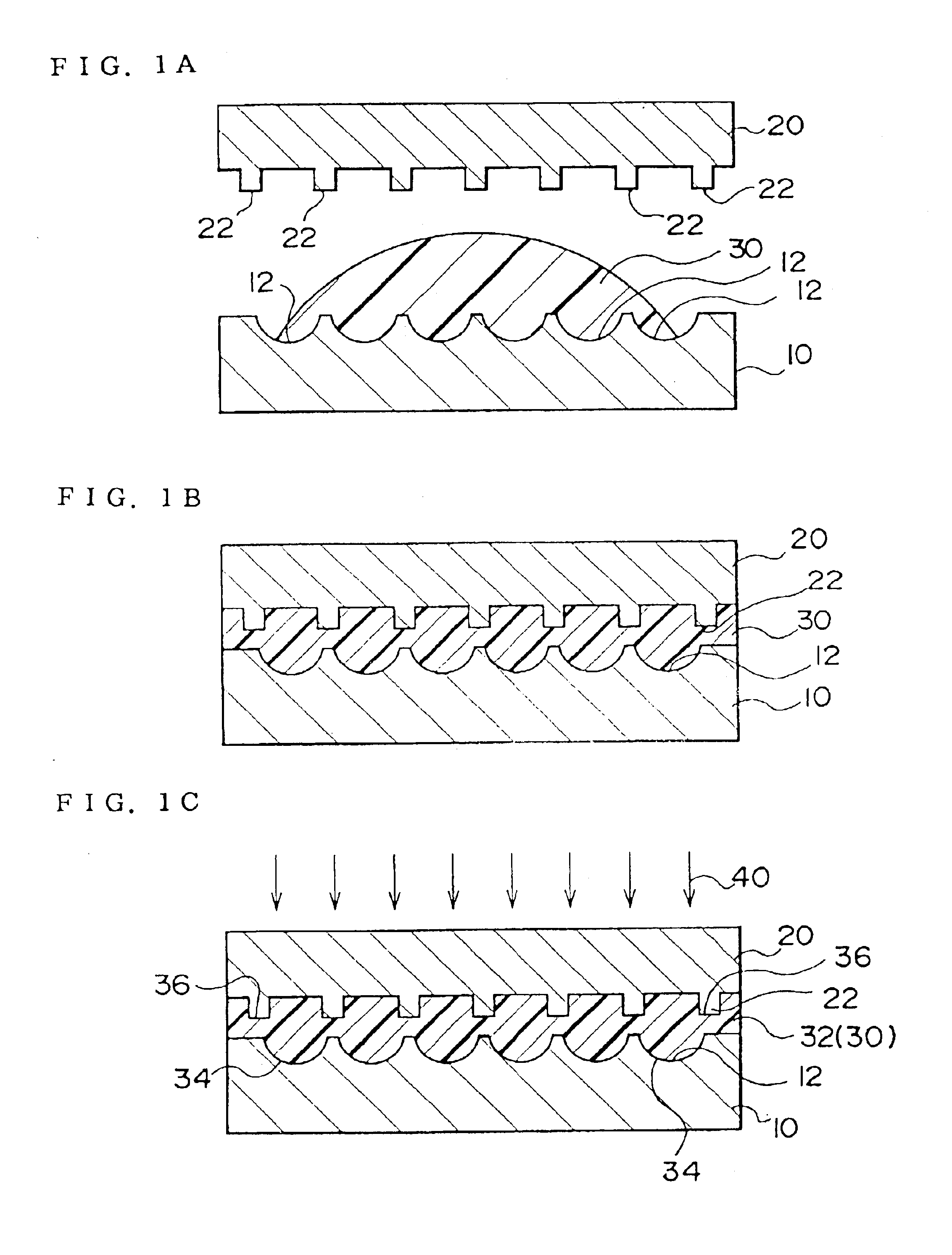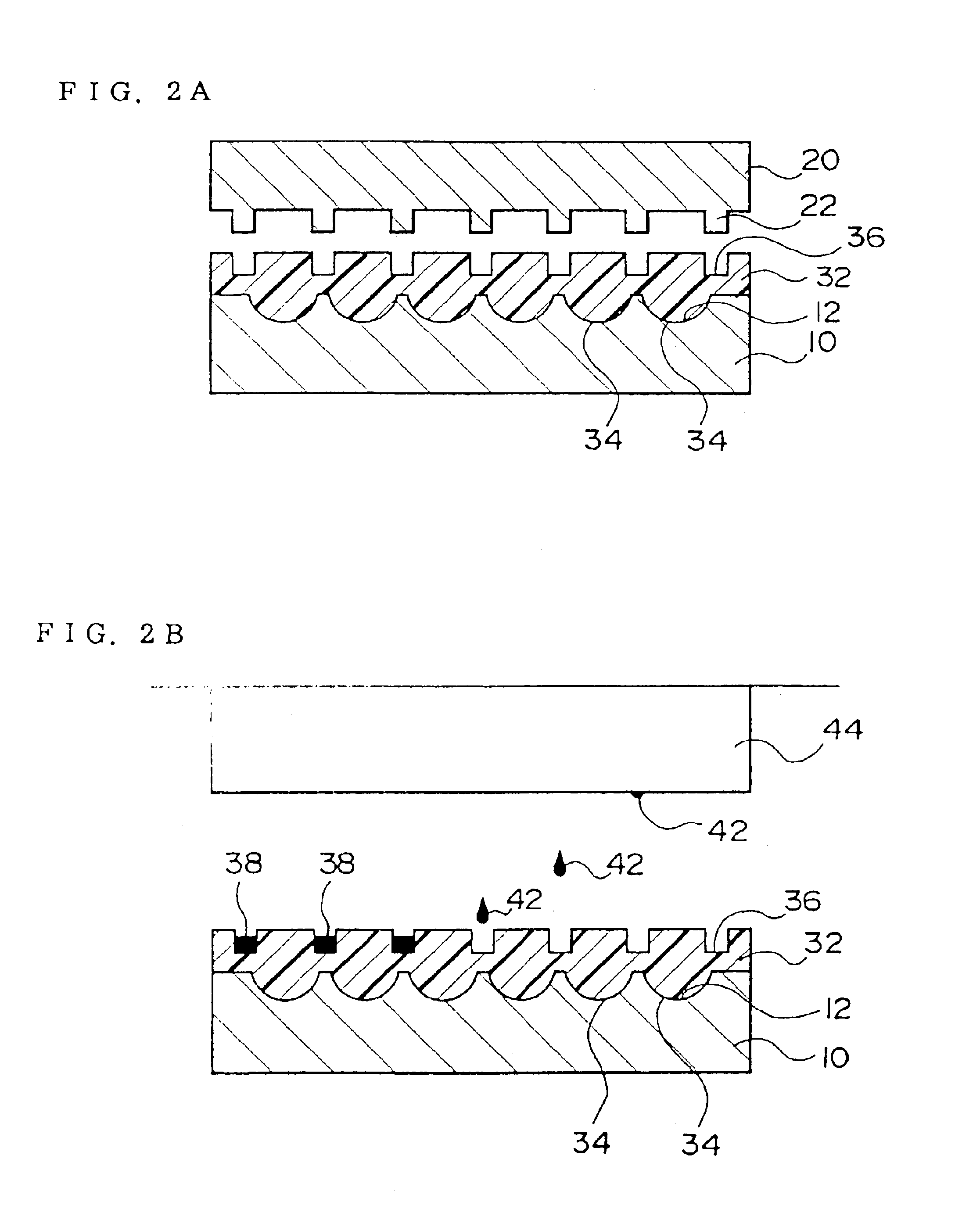Microlens array substrate, method of manufacturing the same, and display device
a microlens array and substrate technology, applied in the field of microlens array substrate, a method of manufacturing the same, and a display device, can solve the problems of increasing costs, microlens arrays giving no attention to the improvement of contrast, and the contrast between pixels cannot be improved by conventional microlens arrays, so as to reduce the number of steps and production costs, and the effect of easy formation
- Summary
- Abstract
- Description
- Claims
- Application Information
AI Technical Summary
Benefits of technology
Problems solved by technology
Method used
Image
Examples
first embodiment
(First Embodiment)
[0063]FIGS. 1A-4B illustrate a method of manufacturing a microlens array substrate according to a first embodiment of the present invention.
[0064]A first master mold 10 and a second master mold 20 shown in FIG. 1A are prepared. A plurality of curved surfaces 12 are formed on the first master mold 10. Each of the curved surfaces 12 has a concave shape that is an inverted shape of a convex lens. On the second master mold 20, a plurality of projections 22 are formed. These projections 22 form a black matrix as seen from a plan view (not shown).
[0065]The first and second master molds 10 and 20 are arranged such that the curved surfaces 12 face the projections 22 and each projection 22 avoids being positioned right above the center of each curved surface 12.
[0066]A substrate precursor 30 (first light transmitting layer precursor) is then closely placed between the master mold 10 and the master mold 20. The substrate precursor 30 is a material for a microlens array subst...
second embodiment
(Second Embodiment)
[0098]FIGS. 5A-6C illustrate a method of manufacturing a microlens array substrate according to a second embodiment of the present invention.
[0099]A substrate precursor 130 is closely placed between a first master mold 110 and the second master mold 20, as shown in FIG. 5A. Curved surfaces 112 are formed on the master mold 110. Each curved surface 112 has a convex shape that is an inverse of the shape of a concave lens. The present embodiment differs from the first embodiment in the shape of the curved surfaces 112. The master mold 20 is as same as in the first embodiment, and a material for the substrate precursor 130 can be selected from the materials used in the first embodiment. After the same step as in FIG. 1C, a microlens array substrate 132 is formed. Recesses 136 are formed on the microlens array substrate 132 by transferring the shapes of the projections 22 and lenses 134 are formed by transferring the shapes of the curved surfaces 112. The lenses 134 ar...
third embodiment
(Third Embodiment)
[0105]FIGS. 7-9B illustrate a method of manufacturing a microlens array substrate according to a third embodiment of the present invention. In the present embodiment, a microlens array substrate 200 shown in FIG. 7 is manufactured. The microlens array substrate 200 differs from the microlens array substrate 32 shown in FIG. 2B in the shape of recesses 202. Specifically, each recess 202 has a tapered side. Because the opening of the recess 202 is wider than the bottom, it can be reliably filled with the shading material 42 (see FIG. 2B) even if the pixels are densely arranged. A master mold with projections each having a trapezoid cross section is used to form the recesses 202.
[0106]FIGS. 8A-9B illustrate a process of forming a master mold used for forming the recesses 202.
[0107]A resist layer 214 is formed on a base 212, as shown in FIG. 8A. The base 212 is formed into a master mold by etching the surface thereof. Although there are no specific limitations to the m...
PUM
| Property | Measurement | Unit |
|---|---|---|
| wavelength | aaaaa | aaaaa |
| thickness | aaaaa | aaaaa |
| thickness | aaaaa | aaaaa |
Abstract
Description
Claims
Application Information
 Login to View More
Login to View More - R&D
- Intellectual Property
- Life Sciences
- Materials
- Tech Scout
- Unparalleled Data Quality
- Higher Quality Content
- 60% Fewer Hallucinations
Browse by: Latest US Patents, China's latest patents, Technical Efficacy Thesaurus, Application Domain, Technology Topic, Popular Technical Reports.
© 2025 PatSnap. All rights reserved.Legal|Privacy policy|Modern Slavery Act Transparency Statement|Sitemap|About US| Contact US: help@patsnap.com



